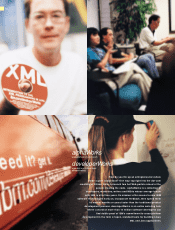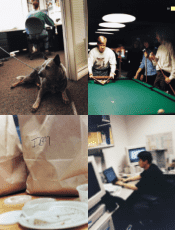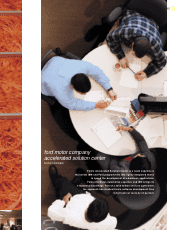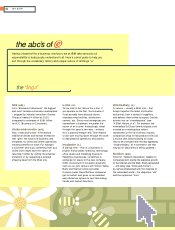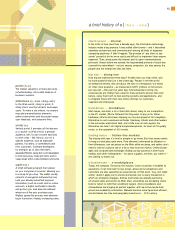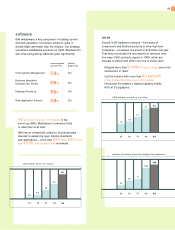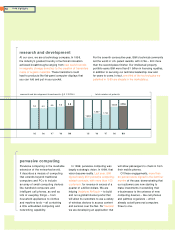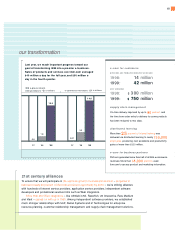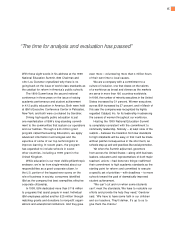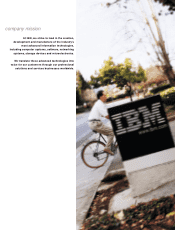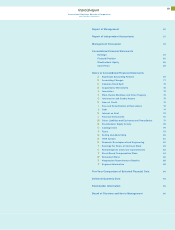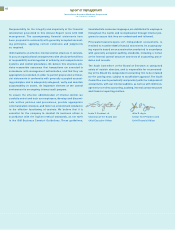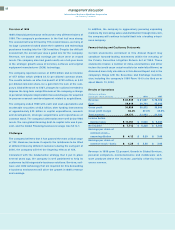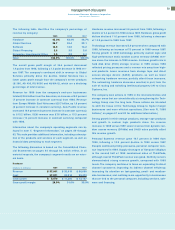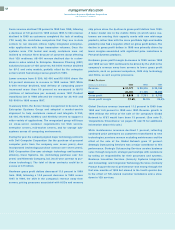IBM 1999 Annual Report Download - page 46
Download and view the complete annual report
Please find page 46 of the 1999 IBM annual report below. You can navigate through the pages in the report by either clicking on the pages listed below, or by using the keyword search tool below to find specific information within the annual report.
At our core, we are a technology company. In 1999,
the industry's greatest foundry of technical innovation
achieved breakthroughs ranging from new world records
in magnetic storage densities to the creation of transistors
made of organic materials. These transistors could
lead to products like flat-panel computer displays that
you can fold and put in your pocket.
For the seventh consecutive year, IBM’s technical community
led the world in U.S. patent awards, with 2,756 – 900 more
than the second-place finisher. Our intellectual property
portfolio earns IBM more than $1billion in licensing royalties,
in addition to securing our technical leadership now and
for years to come. In fact, one-third of the technologies we
patented in 1999 are already in the marketplace.
research and development
’99
1,724
1,383
1,867
2,658 2,756
research and development investments —[ $in billions total number of patents
’95 ’96 ’97 ’98
pervasive computing
Pervasive computing is the inevitable
extension of the networked world.
It describes a mosaic of computing
that extends beyond traditional
computers and PCs to include
an array of small computing devices
like handheld computers and
intelligent cell phones, as well as
lots of everyday things – from
household appliances to clothes
and machine tools — all containing
a little embedded computing and
networking capability.
In 1998, pervasive computing was
largely a strategic vision. In 1999, that
vision became reality. Last year, IBM
signed nearly 250 pervasive computing-
related contracts, with more than 100
customers, for revenue in excess of a
quarter of a billion dollars. We are
helping Vodafone AirTouch – to build
and run a global Internet portal that
will allow its customers to use a variety
of wireless devices to access content
and services over the Net. For Swissair
we are developing an application that
will allow passengers to check in from
their mobile phones.
Of these engagements, more than
60 percent were signed in the last four
months of the year, demonstrating that
our customers are now starting to
make investments in extending their
e-businesses to the universe of new
computing devices – like cell phones
and palmtop organizers – which
already outsell personal computers
three to one.
’99
5.2
5.3 5.5 5.6 5.8
’95 ’96 ’97 ’98
44 1999 highlights


